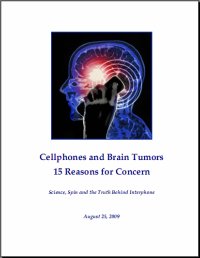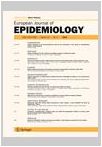Interphone Study Design Flaws

Interphone Study
Design Flaws
Lloyd Morgan, B.Sc., lead author
(08:26 min)
Lloyd Morgan, B.Sc., lead author of the landmark report, "Cellphones and Brain Tumors: 15 Reasons for Concern", discusses the flaws in the Interphone study that render it unreliable as a gauge of risk of brain tumors from cell phones. The 11 design flaws grossly underestimate the risk, and even still, the Interphone study, just published in the International Journal of Epidemiology, still shows statistically significant increased risk of brain tumors after 10 years of cellphone use. This is ominous because toxicants often take decades to show tumor risks, and we are seeing it at just 10 years. Cell phone usage rates in the Interphone study were just a fraction of cell phone usage rates today among adults and children alike. Finally, without explanation, results were not published for acoustic neuromas and salivary gland tumors which are the tumors closest to the ear against which one places the cell phone.


25 Aug 2009
"Cellphones and Brain Tumors: 15 Reasons for Concern"

|
Cellphones and Brain Tumors - 15 Reasons for Concern.PDF Size : 0.429 Kb Type : PDF |
Please click on the top line of the PDF above to download the 44 page file.


Cellphones and Brain Tumors: 15 Reasons for Concern, Science, Spin and the Truth Behind Interphone
(02:04 min)
August 25, 2009
Cellphones Cause Brain Tumors
A new report was released today by the International EMF Collaborative entitled "Cellphones and Brain Tumors: 15 Reasons for Concern, Science, Spin and the Truth Behind Interphone".
Groups affiliated with the report include Powerwatch and the EM Radiation Research Trust in the UK, and the EMR Policy Institute, ElectromagneticHealth.org and The Peoples Initiative Foundation in the US.
The exposé discusses research on cellphones and brain tumors and concludes:
- There is a risk of brain tumors from cellphone use;
- Telecom funded studies underestimate the risk of brain tumors, and;
- Children have larger risks than adults for brain tumors.
This report, sent to government leaders and media today, details eleven design flaws of the 13-country, Telecom-funded Interphone study. The Interphone study, begun in 1999, was intended to determine the risks of brain tumors, but its full publication has been held up for years. Components of this study published to date reveal what the authors call a 'systemic-skew', greatly underestimating brain tumor risk.
The design flaws include categorizing subjects who used portable phones (which emit the same microwave radiation as cellphones,) as 'unexposed'; exclusion of many types of brain tumors; exclusion of people who had died, or were too ill to be interviewed, as a consequence of their brain tumor; and exclusion of children and young adults, who are more vulnerable.
International scientists endorsing the report include Ronald B. Herberman, MD, Director Emeritus, University of Pittsburgh Cancer Institute; David Carpenter, MD, Director, Institute for Health and the Environment, University at Albany; Martin Blank, PhD, Associate Professor of Physiology and Cellular Biophysics, Columbia University; Professor Yury Grigoriev, Chairman of Russian National Committee on Non-Ionizing Radiation Protection, and many others.



European Journal of Epidemiology
Volume 22, Number 9, 647-664, DOI: 10.1007/s10654-007-9152-z
Original Paper
"The INTERPHONE study: design, epidemiological methods, and description of the study population"
Elisabeth Cardis, Lesley Richardson, Isabelle Deltour, Bruce Armstrong, Maria Feychting, Christoffer Johansen, Monique Kilkenny, Patricia McKinney, Baruch Modan and Siegal Sadetzki, et al.
Abstract The very rapid worldwide increase in mobile phone use in the last decade has generated considerable interest in the possible health effects of exposure to radio frequency (RF) fields. A multinational case–control study, INTERPHONE, was set-up to investigate whether mobile phone use increases the risk of cancer and, more specifically, whether the RF fields emitted by mobile phones are carcinogenic. The study focused on tumours arising in the tissues most exposed to RF fields from mobile phones: glioma, meningioma, acoustic neurinoma and parotid gland tumours. In addition to a detailed history of mobile phone use, information was collected on a number of known and potential risk factors for these tumours. The study was conducted in 13 countries. Australia, Canada, Denmark, Finland, France, Germany, Israel, Italy, Japan, New Zealand, Norway, Sweden, and the UK using a common core protocol. This paper describes the study design and methods and the main characteristics of the study population. INTERPHONE is the largest case–control study to date investigating risks related to mobile phone use and to other potential risk factors for the tumours of interest and includes 2,765 glioma, 2,425 meningioma, 1,121 acoustic neurinoma, 109 malignant parotid gland tumour cases and 7,658 controls. Particular attention was paid to estimating the amount and direction of potential recall and participation biases and their impact on the study results.


|
Interphone Study.PDF Size : 0.215 Kb Type : PDF |
Please click on the top line of the PDF
on your left to
download the 18 page file.


Educational and Informational Purposes: All information on this
site and all links that are linked to from StayOnTheTruth.com represent
solely the opinions of their producers.
This
information and links to more information are made available to you as a
resource for your own research and evaluation not as an endorsement.
StayOnTheTruth.com is not
in the business of persuading you or anyone else to believe anything
that that is presented linked to from this site; however, it does
encourage you to use all available resources to form your own judgement
about very important things that affect your life.

Fair Dealing and Fair Use Notice: The material on this site is provided for educational and informational purposes. It may contain copyrighted material the use of which has not always been specifically authorized by the copyright owner. It is being made available in an effort to advance the understanding of scientific, environmental, economic, social justice and human rights issues etc. It is believed that this constitutes a 'fair dealing' or 'fair use' of any such copyrighted material as provided for in copyright law. In accordance with the Fair Dealing or Fair Use intention, the material on this site is distributed without profit to those who have an interest in using the included information for research and educational purposes. If you wish to use copyrighted material from this site for purposes of your own that go beyond 'fair dealing' or 'fair use', you must obtain permission from the copyright owner. The information on this site does not constitute legal or technical advice.

